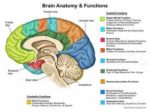Bone Parts
Bones are the structural framework of the body, providing support, protection, and facilitating movement. They are composed of several parts, each with a unique function:
1. Osteon: The structural unit of compact bone.
2. Trabecula: A lattice-like matrix spike.
3. Lacuna: A space for osteocyte.
4. Bone Canaliculus: A channel for osteocyte communication.
5. Osteocyte: A mature bone cell.
6. Osteoblast: A bone-forming cell.
7. Osteoclast: A bone-resorbing cell.
8. Periosteum: The outer bone membrane.
9. Endosteum: The inner bone membrane.
10. Medullary Cavity: A hollow bone region.
11. Epiphysis: The end of a long bone.
12. Diaphysis: The shaft of a long bone.
13. Metaphysis: The growth zone of a long bone.
14. Epiphyseal Plate: A cartilage layer for bone elongation.
15. Epiphyseal Line: A remnant of the growth plate.
16. Articular Cartilage: A friction reducer.
17. Compact Bone: Dense osseous tissue.
18. Spongy Bone: Lightweight osseous tissue.
19. Osteogenic Cell: A bone stem cell.
20. Nutrient Foramen: An opening for blood vessel entry.
Each of these parts plays a crucial role in the overall function of the bone. For instance, the osteon, the structural unit of compact bone, provides strength and rigidity. The trabeculae, on the other hand, form a lattice-like structure in spongy bone, contributing to its lightweight nature. The osteocytes, osteoblasts, and osteoclasts are responsible for bone maintenance, formation, and resorption, respectively. The periosteum and endosteum are membranes that cover the outer and inner surfaces of the bone, respectively, providing nourishment and housing bone-forming cells. The medullary cavity houses the bone marrow, which is responsible for blood cell production. The epiphysis, diaphysis, and metaphysis are parts of a long bone, each with specific functions related to growth and articulation. The epiphyseal plate and line are involved in bone growth during childhood and adolescence. The articular cartilage reduces friction at joint surfaces, and the nutrient foramen allows blood vessels to enter the bone, providing it with necessary nutrients. Understanding these parts and their functions is fundamental to understanding the complex nature of the skeletal system..



